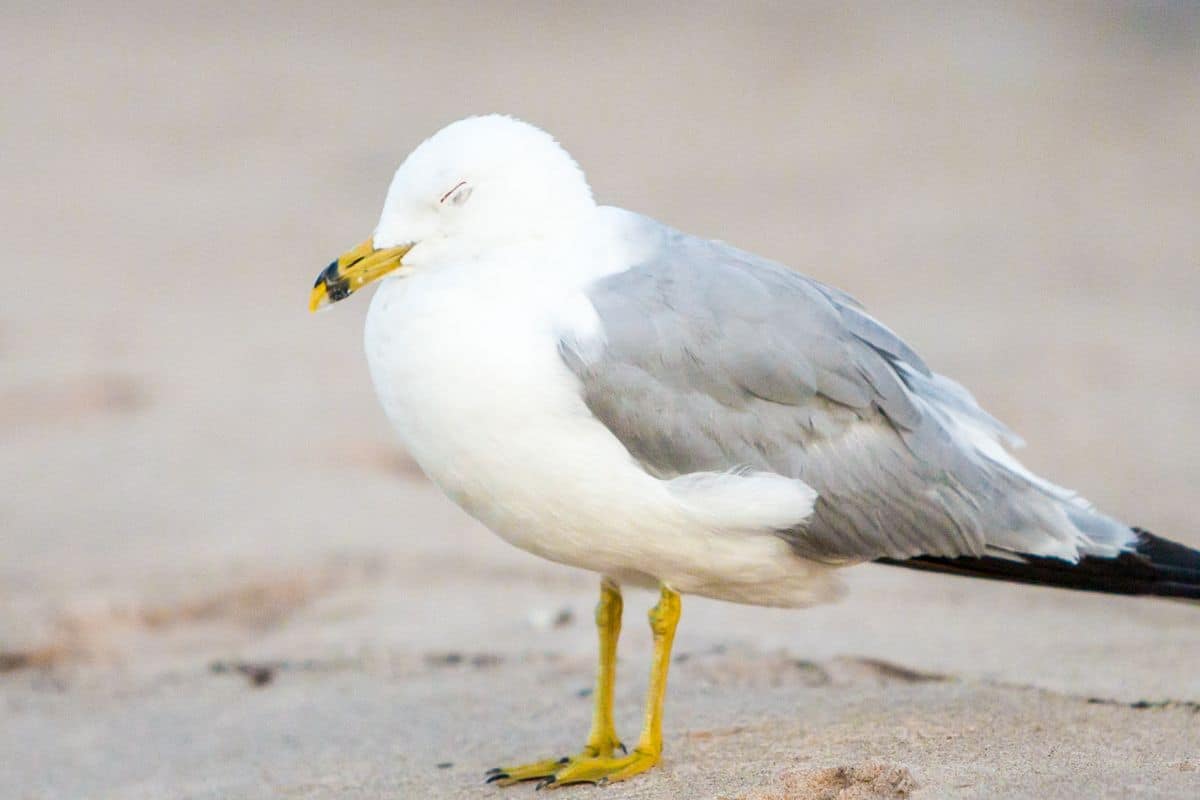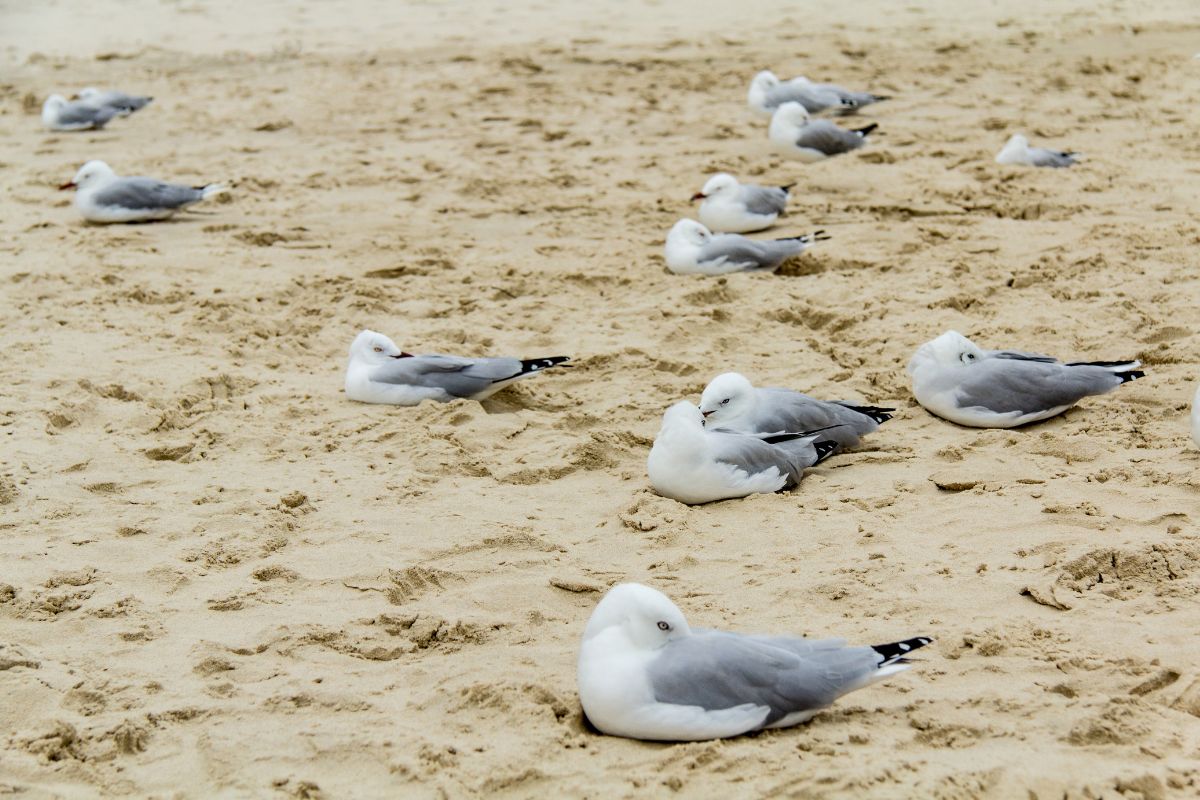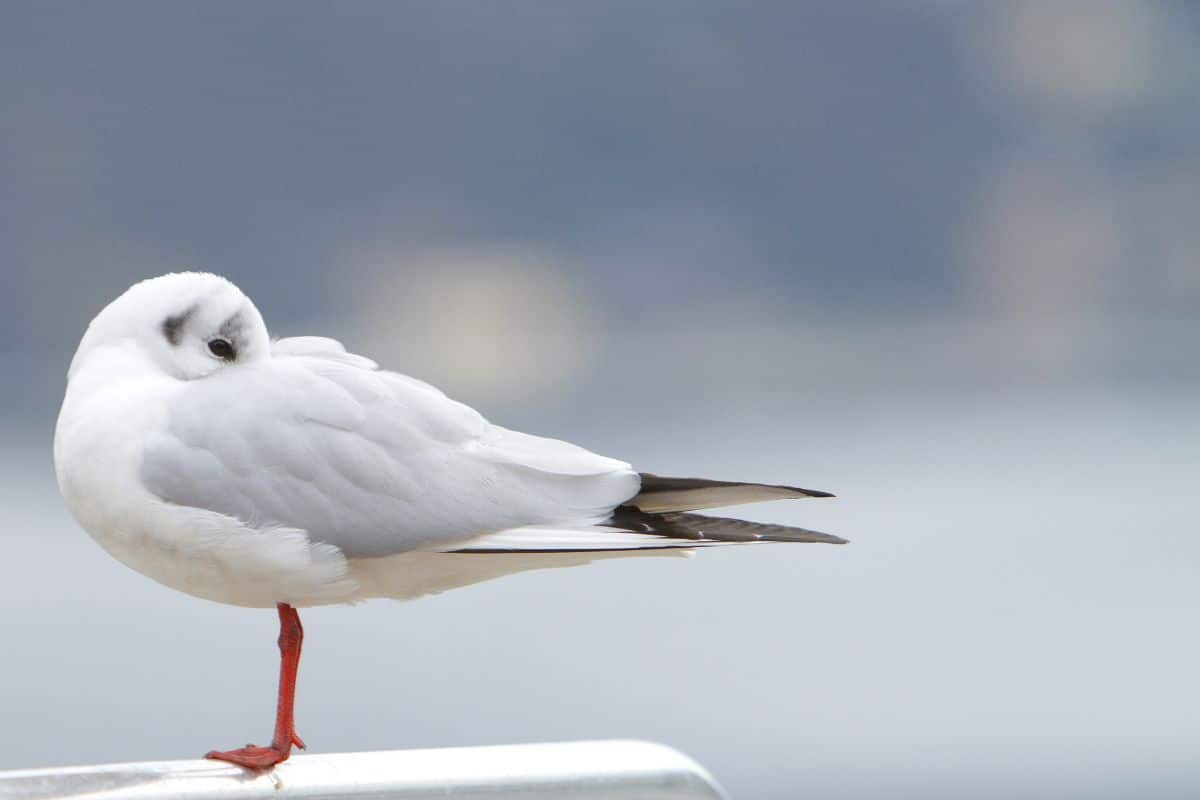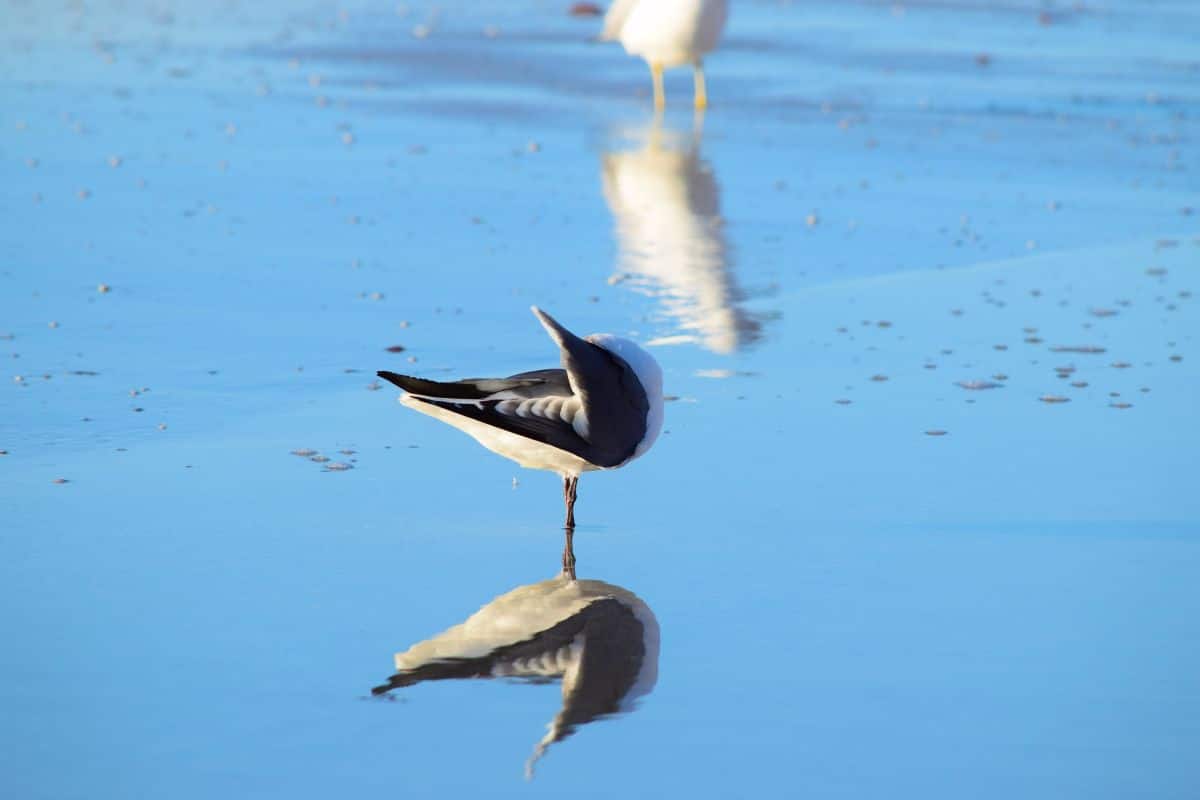Like every other creature on the planet, it’s imperative for seagulls to get a proper amount of sleep. Seagulls can either nap during the day, get some shut-eye at night, or alternate their sleeping patterns to suit their food sourcing best.

Seagulls often choose hard-to-reach places to nap, far from opportunistic predators or overly curious humans. They can also sleep on open water, as long as it’s relatively calm, and you’ll usually find sleeping seagulls near food sources.
Although seagulls are diurnal, meaning they’re most active when the sun is up, they can also adjust their sleep schedules to mesh with the needs of their environment or an abundance of food.
Contents
Where Do Seagulls Sleep?
Seagulls sleep in various places, but they often choose their spots based on isolation from predators and ease of rest.
Waves
Calm seas allow seagulls to stay semi-alert, even while they’re sleeping. This is thanks to their wide vantage point from the waters. Seagulls can spot predators far away and adjust accordingly. Although it’s rare to see a single seagull snoozing on the waves, you might catch a flock taking advantage of a very calm sea.
Seagulls might also take turns sleeping or take shallow, short naps to keep apprised of what’s happening around them. Since many seagulls’ natural predators come from the land, the sea can provide a welcome escape. Seagulls are most threatened by animals like dogs, foxes, larger cats, and weasels.
Unfortunately, the seas are not necessarily a natural haven for gulls. Sharks attack seagulls regularly, and crocodiles are also their natural predators. Even larger birds, like falcons and hawks, have been known to take on seagulls. So while there’s really no safe space for these birds to relax fully, the seas do eliminate some major land predators and let the gulls themselves keep an eye on the skies.
In Colonies

Seagulls, like many animals, sleep in colonies for safety. This system allows some birds to lower their guard while others keep the flock safe from predators. Seagulls can also pick up on what the others in their colony are doing and use the hive mind approach to make sure that danger isn’t on the horizon.
Additionally, it’s generally more difficult to attack a flock or pod of animals than to attack a single one. So when it comes to sleeping gulls, there truly is safety in numbers.
Rocks or Trees
Rocks, trees, or other higher-standing surfaces offer seagulls a lot of protection from ground animals that might prey on them. Often you’ll find flocks of gulls perched on tree limbs right near the water or on a rocky outcrop where they can retreat to the skies or the waves if they so choose.
Outcroppings of sea rocks provide another layer of safety, too, because the footing on these rocks is tricky for land animals to navigate, and the dry banks are out of shark and crocodile habitats.
Dumpsters
It’s relatively common to see flocks of seagulls around dumpsters, and it’s certainly easy to understand the appeal if you think about it from their point of view. Dumpsters tend to be higher off the ground, giving the gulls leverage over ground creatures and an easy escape route if one gets too close.
Additionally, dumpsters have lots of yummy food in them, making these trash bins good scavenging sites for the birds. Fast food places right near bodies of water are especially attractive for gulls, and you’ll usually see several birds hovering right around dumpsters in the vicinity.
How Do Seagulls Look While They Sleep?

Seagulls tuck their heads into their feathers while they sleep, protecting the more sensitive parts of their bodies. Then, they generally close their eyes for about ten minutes at a time before peeking out and scanning for predators.
Sleeping gulls will either balance themselves on one leg or sit down while they get a nap in.
Can Seagulls Sleep in the Rain?
Since seagulls have waxy feathers and they tend to tuck their heads into their plumage to sleep, they can certainly sleep in the rain. Seagulls also have deep feathers, keeping them nice and warm even in terrible weather. If the storm is really bad, seagulls might take shelter or avoid taking a nap on the waves.
Where Do Baby Seagulls Sleep?
Unlike adult seagulls, baby seagulls can’t stand up on one leg to take a nap. So instead, they sleep in nests until they’re a few months old.
Baby seagulls leave their nests initially right after they’re born but go back to the nest for shut-eye every night.

Seagulls are spectacularly suited to sleep in all sorts of different conditions, from open water to high perches. These amazing animals can even nap during a rainstorm and protect each other from predators.

Love 💘 all this info. About Seagulls.